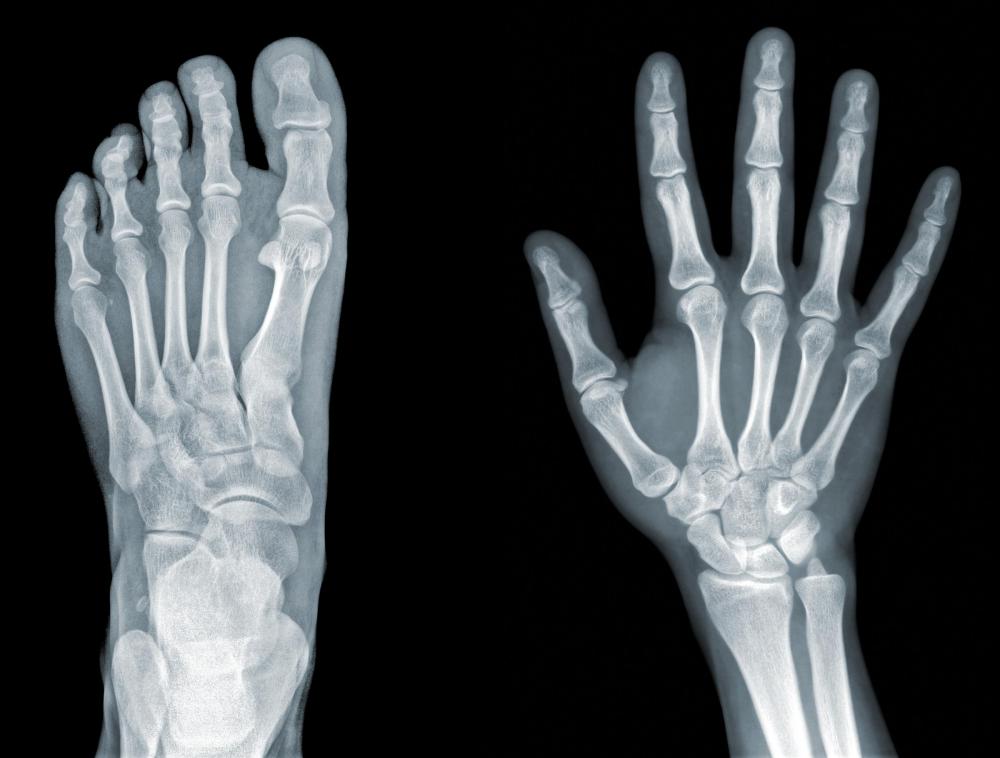At TheHealthBoard, we're committed to delivering accurate, trustworthy information. Our expert-authored content is rigorously fact-checked and sourced from credible authorities. Discover how we uphold the highest standards in providing you with reliable knowledge.
What is an Accessory Bone?
An accessory bone is an extra bone found in a statistically significant percentage of the population, but not everyone. Most people have 206 bones in their skeletons, but some have a few extra, and these may go undetected until the patient experiences an injury, or until after death, when a pathologist may identify it on examination. The hands and feet are the most common locations for accessory bones and sometimes they are so small that they cannot be spotted on an x-ray evaluation of the skeleton.
Accessory bones form during fetal development. As the bones start to ossify, sometimes a separate bone ossifies nearby, or a developing bone fails to fuse with a companion segment. The hands and feet are common locations for an accessory bone because they feature a large number of small bones, providing a lot of room for variation in skeletal development. Some examples include the os trigonum, os peroneum, and accessory navicular bone in the foot.

Many patients do not experience any symptoms as a result of their accessory bones. The bones develop normally, articulate with neighboring structures, and pose no problems. Sometimes they become an issue after physical trauma, because a doctor may mistake the additional bone for evidence of a fracture. Orthopedic surgeons can use reference images to see if an x-ray shows an accessory bone or indicates the presence of an actual fracture.

Other patients may experience problems as a result of an accessory bone. The bone could float freely, grinding up against other bones and causing joint problems. Patients can experience pain and irritation or may find that the bone creates a distorted physical appearance. In these cases, a surgeon can remove the bone to restore normal appearance and function, and resolve the problem.

When a doctor identifies an accessory bone as part of an investigation for another medical issue, she may note it in the patient's chart to make sure other care providers are aware, but no additional action is necessary. If there is a family history of accessory bones, geneticists and researchers may be interested in studying the family to see if they can find the genetic connection. This can be of general scientific interest and may also provide useful insight into human genetics and the inheritance of certain traits. People who submit samples for research typically do so without compensation and researchers will contact them if they uncover anything of interest or concern while studying the samples.
AS FEATURED ON:
AS FEATURED ON:
















Discuss this Article
Post your comments